I felt like having fish burgers so decided to make buns for the fish. I’ve had some luck with using potato so decided to add some mashed potato to my milk bread for buns. Both the potato along with the tangzhong should made very soft buns.
I was watching a YouTube video recently that sought to dispel the idea that tangzhong should be made at a 1:5 ratio of flour to liquid. In fact, the author suggested based on studies done with tangzhong and yudane that the ratio should be closer to 1:1-1:2. They also suggested that ideally the percent flour from the tangzhong or yudane should approach 20%. With a 1:5 ratio and 20% flour in tangzhong would leave essentially no liquid left to prepare the dough with. However, at 1:2 or less there would be liquid left. So this is my first bake using a lower ratio of 1:2 flour to milk but at 10%, which is higher than my usual 7%. I will gradually adjust the tangzhong over time to see if there is any discernible improvement to the bread. I figured that this was a good start.

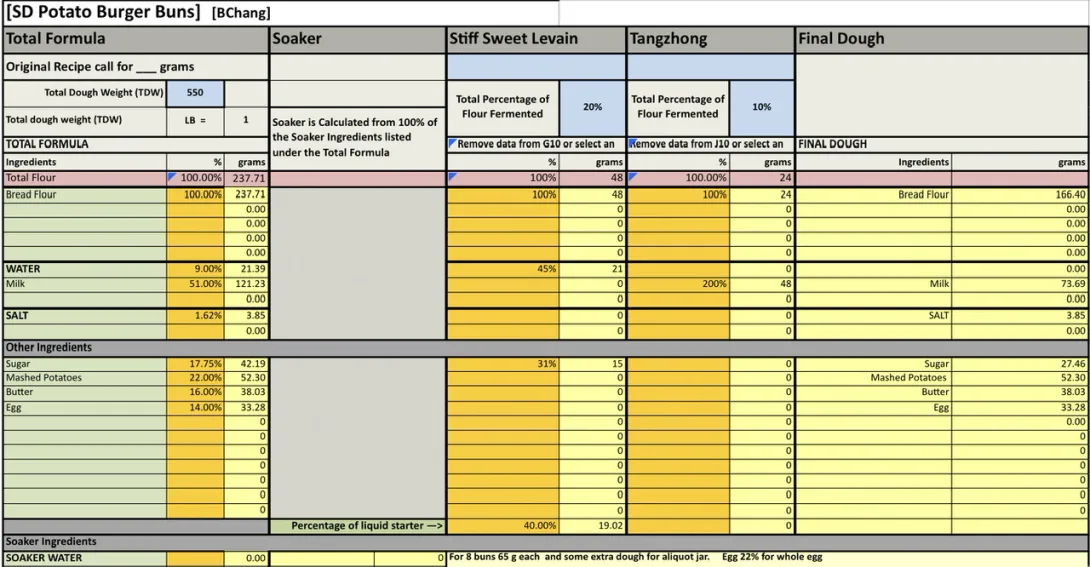
For 8 buns about 65 g each
egg wash: 1 yolk, 1 tbsp milk and a pinch of salt, beaten…
Instructions
Levain
Mix the levain ingredients in a jar or pyrex container with space for at least 300% growth.
Press down with your knuckles or silicone spatula to create a uniform surface and to push out air.
At a temperature of 76ºF, it typically takes up to 10-12 hours for this stiff sweet levain to be at peak. For my starter I typically see 3-3.5 times increase in size at peak. The levain will smell sweet with only a mild tang.
Tangzhong
In a sauce pan set on medium heat, stir the milk and flour until blended. Then cook for several minutes until well thickened, stirring regularly with a spoon or heat-resistant spatula. Let cool in the pan or, for faster results, in a new bowl. Theoretically it should reach 65ºC (149ºF) but I don’t find I need to measure the temperature as the tangzhong gelatinizes at this temperature. You can prepare this the night before and refrigerate it, ensure that it is covered to prevent it from drying out.
Dough
In the bowl of a stand mixer, add the milk (consider holding back 10 g of milk and adding later if this is the first time you’re making this), egg, tangzhong, salt, sugar and levain. Mix and then break up the levain into many smaller pieces. Next add the flour, I like to use my spatula to mix until there aren’t many dry areas. Allow the flour to hydrate (fermentolyse) for 15 minutes. Mix on low speed and then medium speed until moderate gluten development this may take 5-10 mins. You may want to scrape the sides of the bowl during the first 5 minutes of mixing. Next drizzle in the melted butter a little at a time, or alternatively add room temperature butter one pat at a time. Slow the mixer down to avoid splashing the butter at you. The dough may come apart, be patient, continue to mix until it comes together before drizzling or adding in more butter. Once all the butter has been added and incorporated increase the speed gradually to medium. Add the mashed potatoes gradually. Mix at medium speed until the gluten is well developed, approximately 10 mins. You will want to check gluten development by windowpane during this time and stop mixing when you get a good windowpane. You should be able to pull a good windowpane.
On the counter, shape the dough into a tight ball, cover in the bowl and ferment for 2.5-3.5 hours at 82ºF. There should be some rise visible at this stage.
Place a sheet of parchment paper on a large cookie tray. Punch the dough down and then divide into 8 equal portions. Form each into tight boules. Place on a parchment lined cookie tray. Cover them and allow them to fully proof about 4-6 hours, they should pass the poke test.
After about 30 mins of proofing time, whisk your remaining egg and milk and then brush the small boules.
About 30 mins prior to end of final proof preheat the oven to 350°F.
Immediately prior to baking brush the dough again with the egg and milk mixture. Next spoon some sesame seeds on the buns, spread and press them lightly onto the buns.
Bake the buns uncovered for 30-35 minutes or until the internal temperature is at least 190F. Cover if your rolls get brown early in the baking process.
Remove the bread from the oven and transfer the buns to a rack to cool. 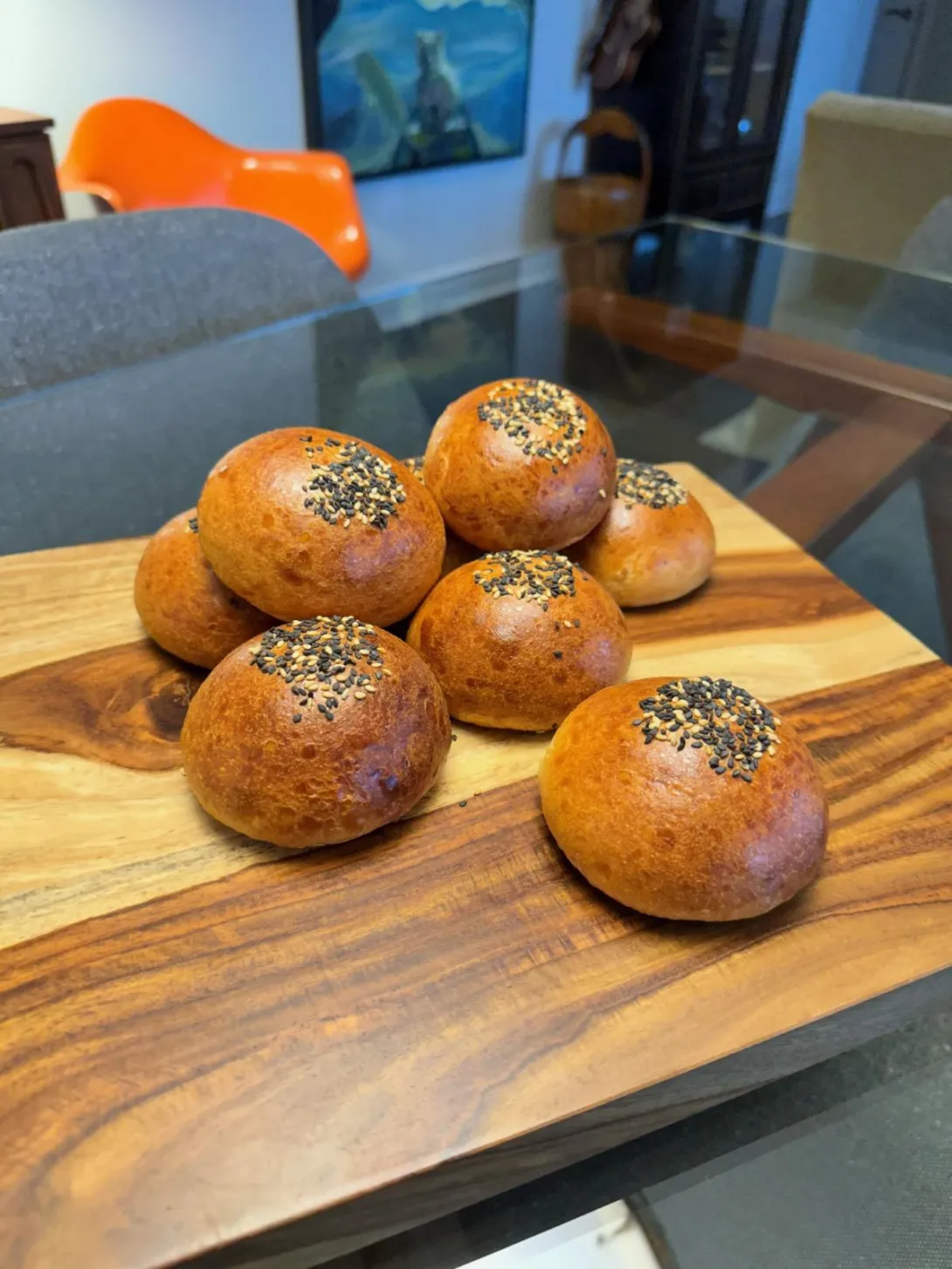

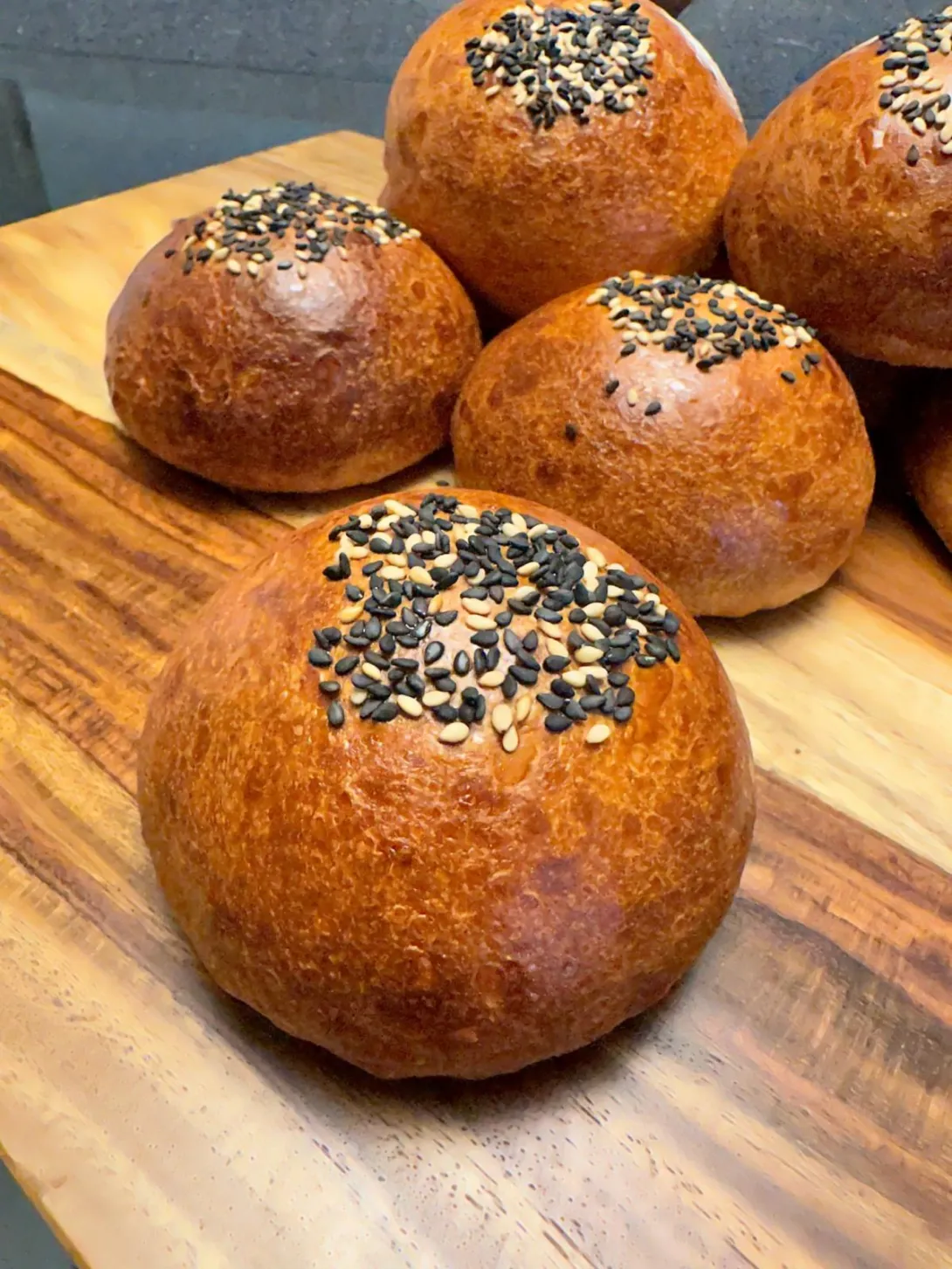
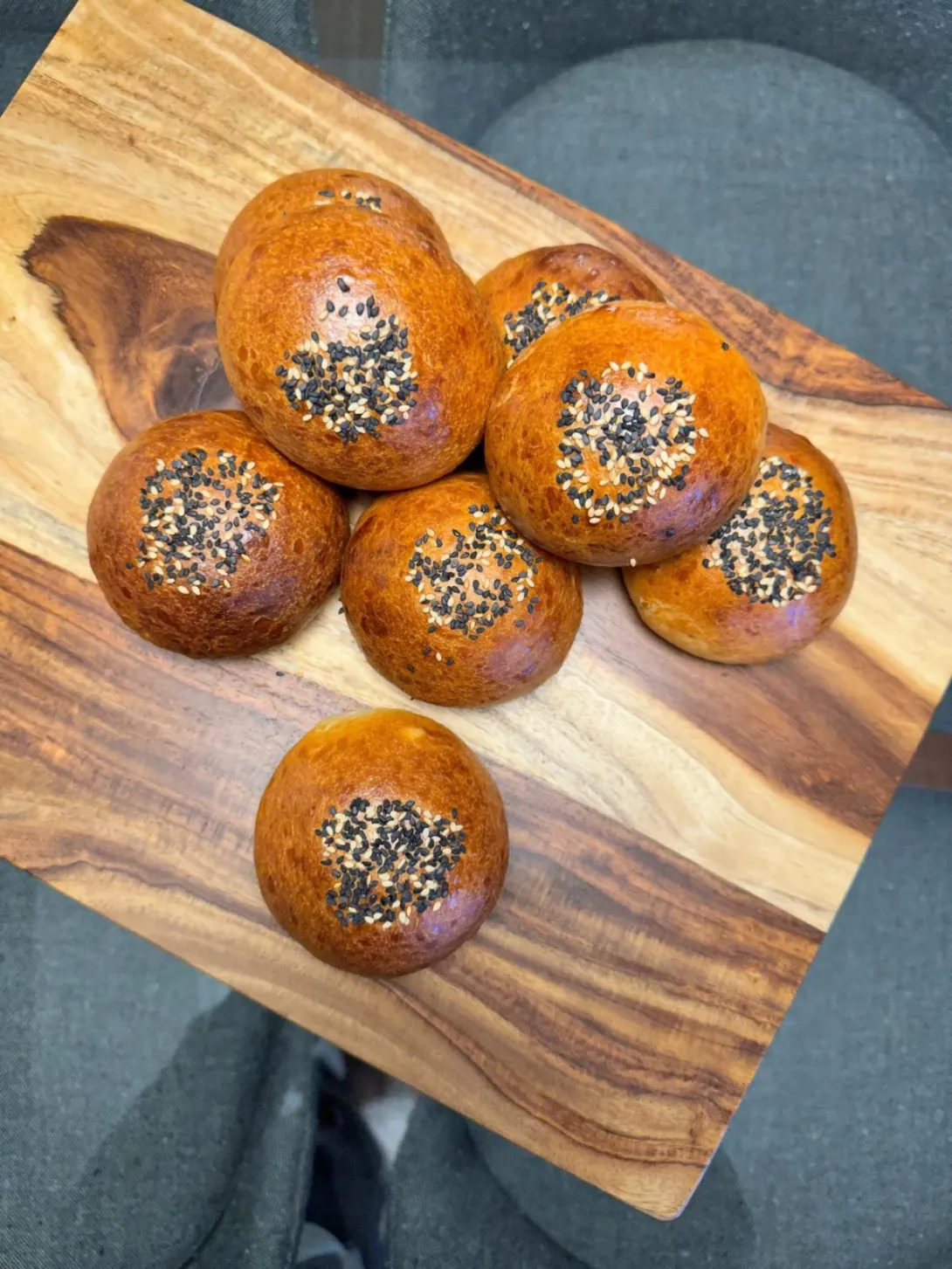
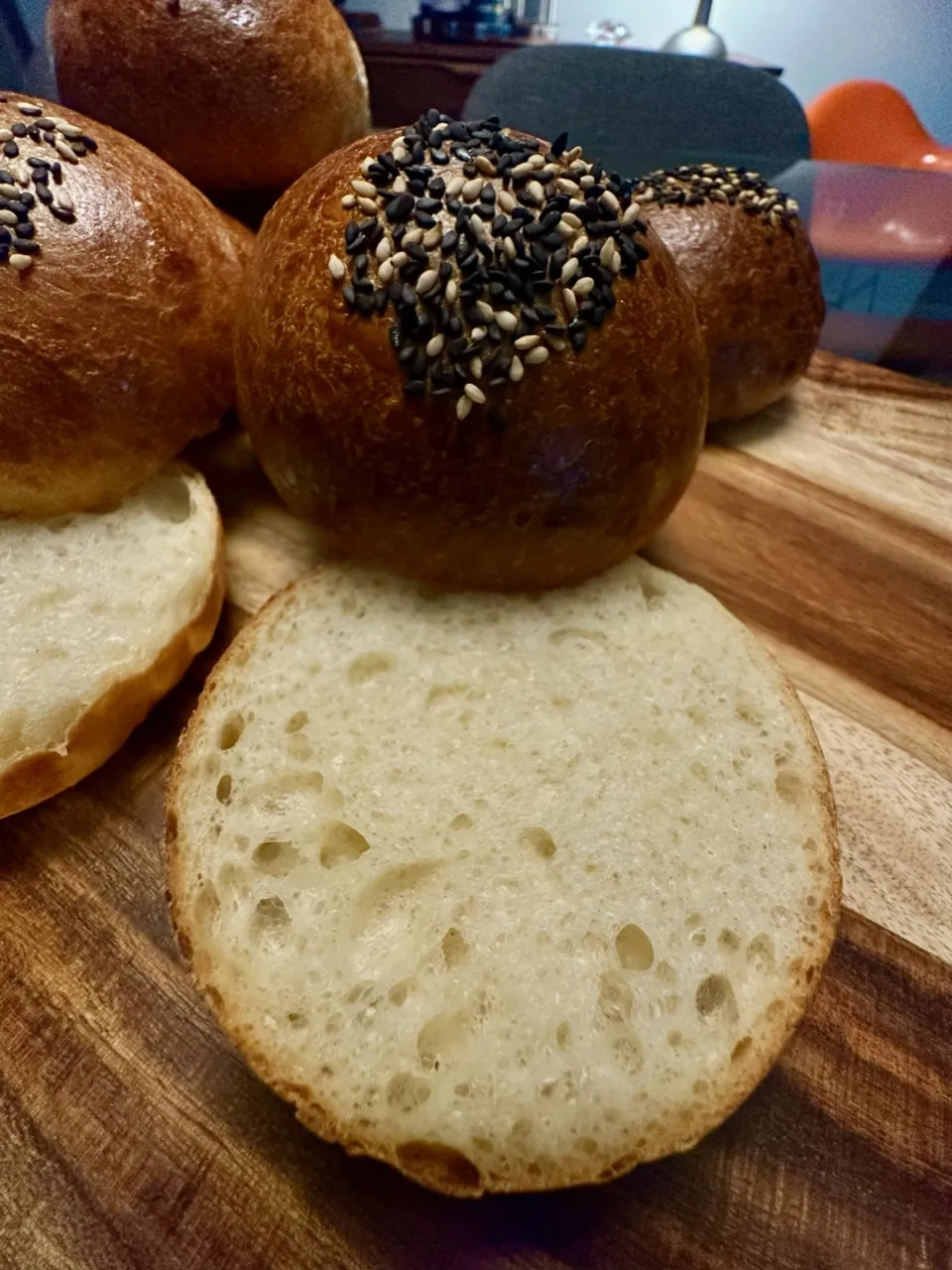
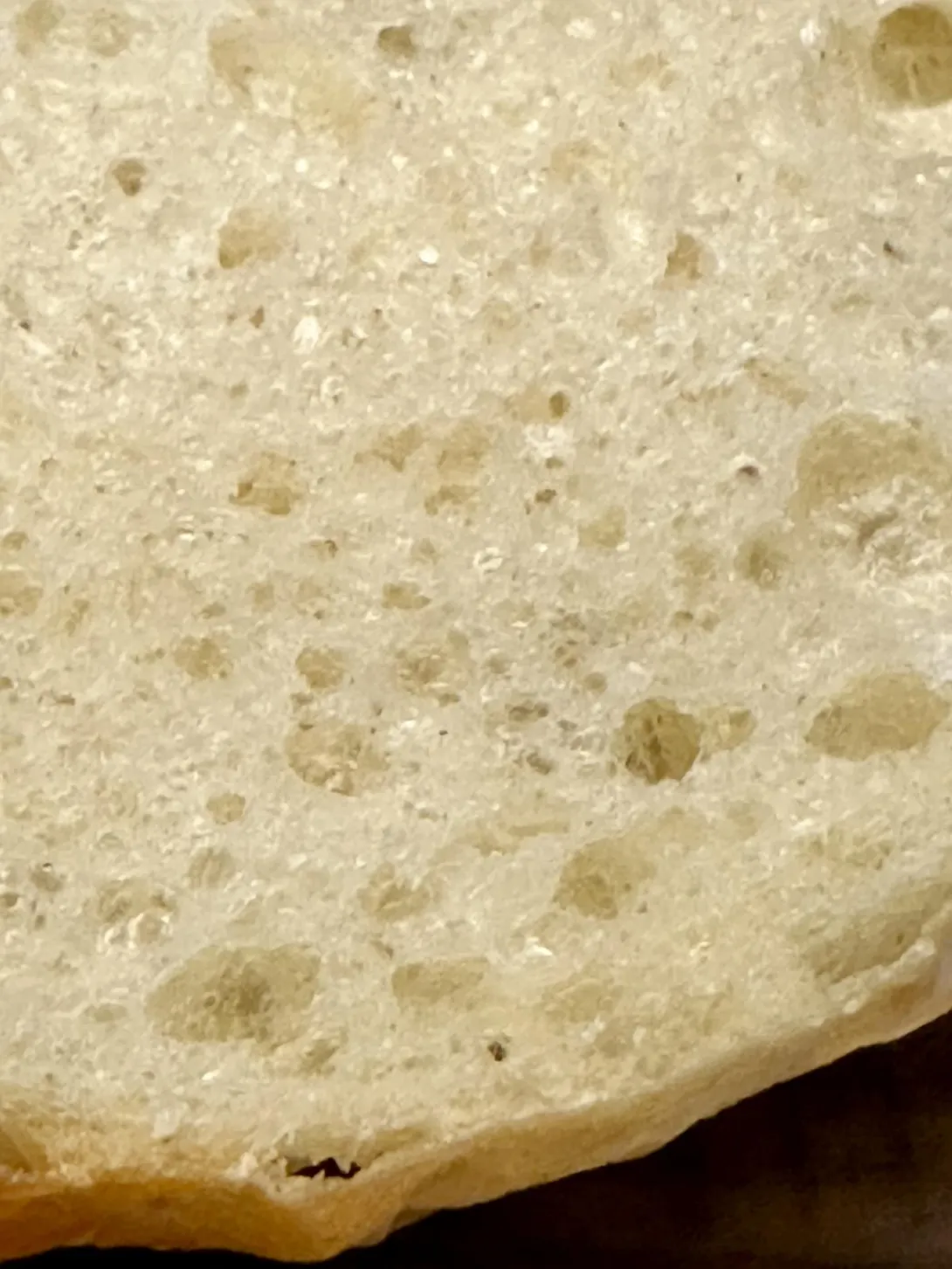
I have to say that these came out just perfectly. They are so soft and tender, like clouds of bread, perfect for the fish burgers with kewpie mayo and pickles. Over time I will gradually work the percent flour of the tangzhong up and hit the magic 20% and see how they turn out. In the meantime, this first bake looks good to me.
- Benito's Blog
- Log in or register to post comments
The crust on these rolls is absolutely gorgeous, as is the glistening crumb. Interesting to see how your experiments with the different ratios and percentages go over time, but after this bake, I'd fast forward to 20%. Only you could make a dinner roll look this good.
Thank you AG you’re much too kind. Yes you’re right though, the next one I might as well jump in with both feet and go up to 20% of the flour in the tangzhong and see if there really is any difference in flavour.
Tangzhong 湯種 / Yudane 湯種 are actually using same characters (Chinese vs Japanese Kanji) but in a slightly different ways in bread making. Tangzong was modified from Yudane by a Taiwanese baker.
There is some Chinese ways to use boiling water in making flat bread, calling this as 燙 (boiling/scalding)麵(flour, not noodles). The texture of the flatbread also different when using boiling or warm water (about 60-65C). The higher percentage the boiling water is used, the more water the flour can absorb.
Chain baker explored Tangzhong / Yudane. He used 13.6 % of total flour for this test and found the result is negligible (Yudane slightly lighter). He prefers Yudane due to the convenience.
Here is another take to compare these two method: Tangzhong (7% of flour) vs Yudane (20% of flour). She prefers Yudane over Tangzhong because she found the Yudane bread stays fresh longer.
Please note that this comparison is not on the same ground because the percentage of flour is different.
In this article, "The Staling and Texture of Bread Made Using the Yudane Dough Method", authors compared no-Yudane (control), Yudane using 20% flour and 40% flour. They found that the staling of the Yudane breads, particularly Yudane 40%, is obviously slower than the control.
I believe there will be some sweet pot of the percentage flour to use in Yudane method of bread making.
Yes I was aware that the written word in Chinese and Japanese are the same. However, the methods used to produce the gelatinized starches are different. I prefer tangzhong mostly because I use it most in milk breads and like to use milk so it is easier to put the milk and flour in a small pot and cook it. If I was using water, I’d probably use what most refer to Yudane by boiling water in a kettle and pouring that into the flour.
This is the video that I saw that interested me and is making me rethink the 1:5 ratio for tangzhong that I have been using until this bake.